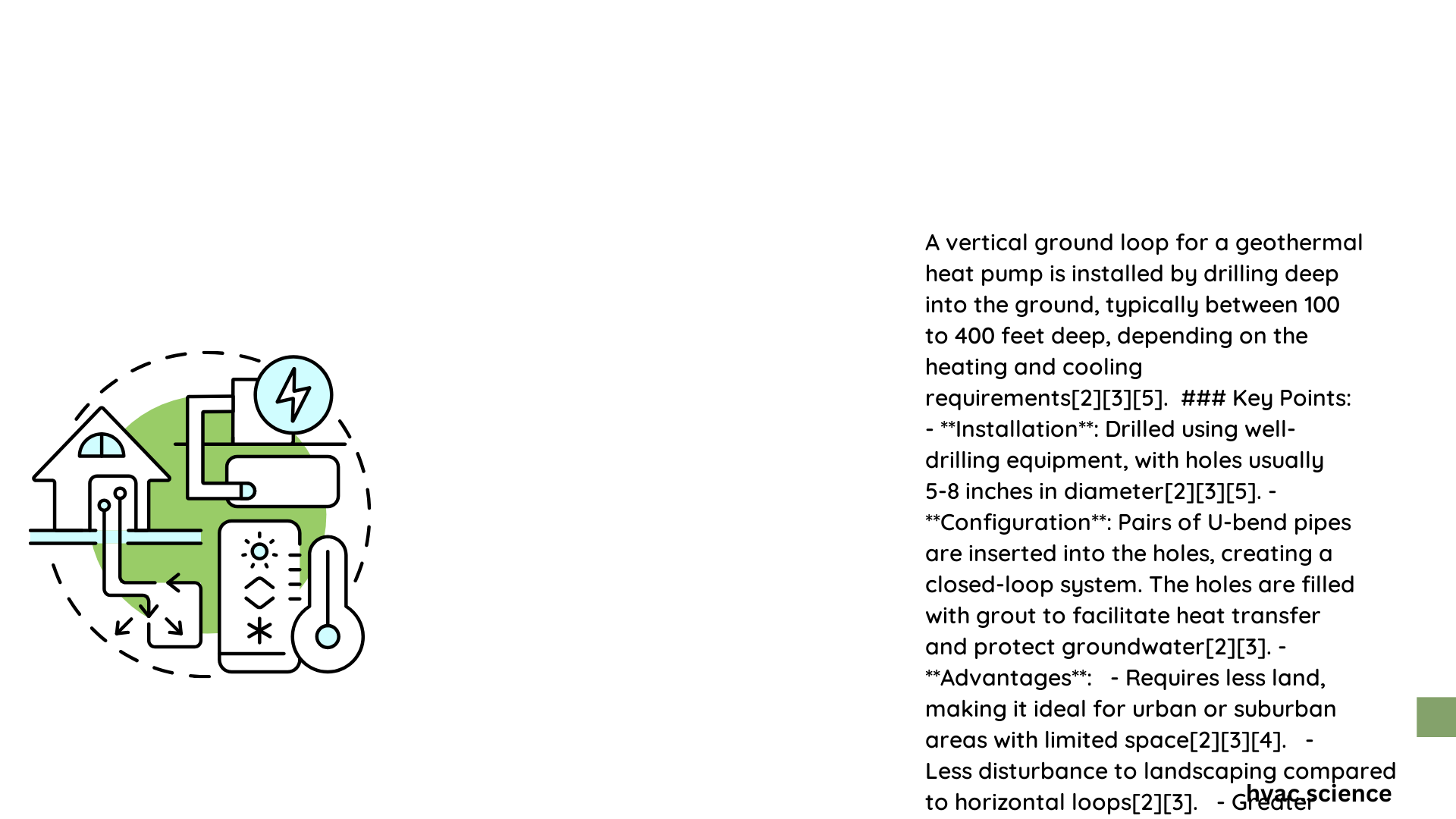Geothermal heat pump vertical ground loop represents an advanced renewable energy technology that harnesses the earth’s stable underground temperatures to provide efficient heating and cooling. By drilling deep boreholes and installing specialized U-bend pipes, these systems can extract thermal energy from the ground, offering superior energy efficiency compared to traditional HVAC solutions. Homeowners and commercial property managers can leverage this innovative approach to reduce energy costs and minimize environmental impact.
What Makes Vertical Ground Loops Unique?
Vertical ground loops differ from horizontal systems by utilizing deep, narrow boreholes that penetrate the earth’s subsurface. These systems are particularly advantageous in areas with limited land space or challenging soil conditions.
How Deep Are Vertical Ground Loop Boreholes?
Vertical ground loop boreholes typically range from 100 to 400 feet deep, depending on several critical factors:
- Local geological conditions
- Building’s heating and cooling requirements
- Soil thermal conductivity
- Available installation space
| Borehole Depth | Typical Application | Thermal Performance |
|---|---|---|
| 100-150 feet | Small residential homes | Moderate efficiency |
| 200-250 feet | Medium-sized buildings | High thermal transfer |
| 300-400 feet | Large commercial structures | Maximum energy extraction |
What Materials Are Used in Vertical Ground Loops?
The primary components of vertical ground loops include:
- Pipe Materials
- High-density polyethylene (HDPE)
- Corrosion-resistant synthetic polymers
-
UV-stabilized pipe configurations
-
Grout Compounds
- Thermally enhanced bentonite mixtures
- Specialized cement-based grout
- Silica-based thermal conductivity enhancers
What Factors Impact Ground Loop Efficiency?
Several critical elements determine the performance of vertical ground loop systems:
- Soil Thermal Conductivity: Higher conductivity enables more efficient heat transfer
- Borehole Spacing: Minimum 10-20 feet between loops prevents thermal interference
- Pipe Configuration: U-bend design maximizes surface contact with surrounding earth
- Installation Precision: Proper grouting and pipe placement are crucial
How Much Does a Vertical Ground Loop System Cost?
Cost considerations for geothermal heat pump vertical ground loop installations:
- Initial Investment: $15,000 – $30,000 per system
- Operational Savings: 30-70% reduction in heating/cooling expenses
- Payback Period: 5-10 years, depending on local energy prices
What Are the Technical Performance Metrics?
Performance indicators for vertical ground loop systems include:
- Coefficient of Performance (COP): 3.0 – 5.0
- Seasonal Energy Efficiency Ratio (SEER): 18 – 25
- Annual Energy Savings: Approximately 40-60% compared to traditional HVAC
What Challenges Exist in Vertical Ground Loop Installation?
Potential obstacles during implementation:
- Site-specific geological constraints
- High initial installation costs
- Requirement for specialized drilling equipment
- Complex permitting processes
- Need for professional engineering assessment
Conclusion

Geothermal heat pump vertical ground loop technology represents a sophisticated approach to sustainable energy management. By understanding its technical nuances, property owners can make informed decisions about implementing this cutting-edge heating and cooling solution.
Recommendations for Potential Users
- Conduct comprehensive site assessment
- Consult certified geothermal installation professionals
- Evaluate long-term energy savings potential
- Consider local geological and regulatory environments
Future Research Directions
- Advanced thermal transfer materials
- Enhanced drilling technologies
- Machine learning-based system optimization
- Integration with smart home energy management systems
Reference:
1. U.S. Department of Energy Geothermal Technologies Office
2. International Ground Source Heat Pump Association
3. Environmental Protection Agency Energy Star Guidelines
